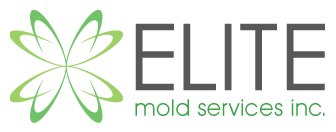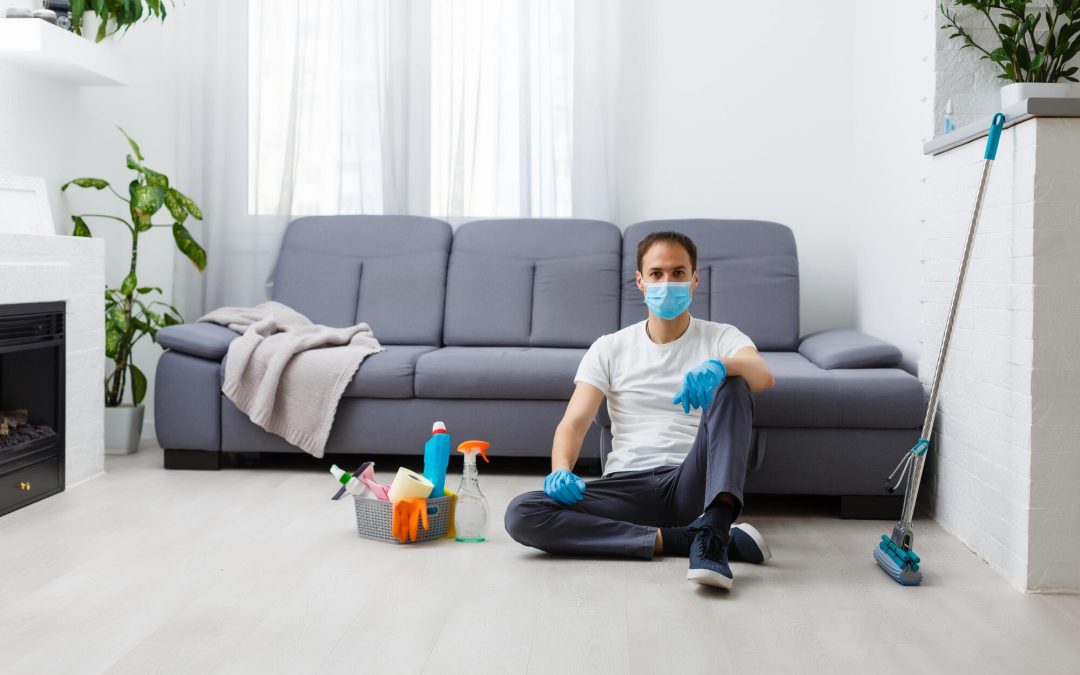Brown mold is an all-too-common household issue that can lead to serious health risks and structural damage if not properly managed. It tends to grow in warm, damp environments, often lurking in places like bathrooms, basements, kitchens, and attics. You might notice it as dark brown or tan spots, often fuzzy or powdery in texture.
Removing brown mold is crucial for keeping your home safe and healthy, but it’s important to do it the right way. Improper removal can lead to further contamination or health problems.
In this blog post, Elite Mold Services in Orlando will share six essential tips for safely removing brown mold from your home. We’ll also highlight the value of our mold inspection, testing, and remediation supervision services. Let’s begin!
What Is Brown Mold?
Let’s start with a breakdown of what exactly is brown mold. Brown mold refers to several types of mold that display a brown or dark brown color. It can range from a light tan to a deep, almost black shade and often has a fuzzy or powdery texture.
Common types of mold with a brownish appearance include Aspergillus, Stachybotrys, and Cladosporium. These molds thrive in moist and warm environments, which makes certain areas in the home particularly susceptible to infestation.
Health Risks of Brown Mold
Brown mold can pose significant health risks, especially to those with allergies, asthma, or weakened immune systems. Inhaling mold spores can lead to respiratory issues such as coughing, wheezing, and shortness of breath. For some people, exposure to mold triggers allergic reactions, causing skin rashes, sneezing, and eye irritation.
Certain types of brown mold, like Stachybotrys, are known to produce mycotoxins, toxic substances that can lead to more severe health problems. These may include headaches, fatigue, or more serious respiratory distress. Given these risks, it’s crucial to address brown mold quickly and follow safe practices during removal to minimize exposure.
Why It’s Important to Remove Brown Mold
Removing brown mold is critical to maintaining a safe and healthy home. As noted, mold can cause significant health risks, especially for people with allergies or respiratory conditions. It releases spores into the air, which can lead to coughing and skin irritation.
Beyond health concerns, brown mold can cause structural damage to your home. It can weaken wood, destroy drywall, and even corrode certain metals, leading to costly repairs. Aesthetic issues are also a factor, as mold creates unsightly stains and produces unpleasant odors.
Prompt removal helps protect your family’s health, prevent costly damage, and maintain a clean, pleasant living environment.
Tips for Safely Removing Brown Mold
Now that we understand brown mold and its health risks, it’s time to share some tips for its safe removal. This ranges from identifying the source of moisture to proper disposal of mold-contaminated items.
1. Identify the Source of Moisture
As we have highlighted above, brown mold thrives in moist environments, so identifying and eliminating sources of moisture is crucial to prevent mold growth. Start by examining common areas where moisture tends to accumulate. Bathrooms, with their frequent use of water, are prime spots for mold.
Basements, due to their proximity to the ground, can also be prone to moisture; look for damp walls, floors, or corners. Kitchens are another potential hotspot, especially around sinks and dishwashers.
To find leaks, carefully inspect pipes for any signs of dripping or corrosion. Examine window frames for water stains, which indicate that water may be seeping in from outside.
Roof leaks can also be a significant source of moisture, so check for any missing or damaged shingles. Addressing these issues early can help prevent mold from taking hold and spreading throughout your home.
2. Gather the Right Safety Gear
When dealing with brown mold, safety should be your top priority. Mold can release spores into the air, which, when inhaled or contacted, can cause a range of health issues, from respiratory problems to skin irritation. That’s why gathering the right safety gear is crucial before you start any mold removal process.
Start with protective equipment to minimize direct contact with mold. Gloves are essential; opt for rubber or latex to shield your hands from spores and cleaning chemicals. Next, use a mask like an N95 respirator to filter out mold spores from the air you breathe. Safety goggles are also important to protect your eyes from airborne spores and cleaning solution splashes.
In addition to equipment, wear protective clothing to cover your skin. Long sleeves and pants are a must to avoid direct contact with mold. You might also consider disposable coveralls for extra protection, especially if you’re working in heavily infested areas.
3. Ventilate the Area
Ventilation is an important step in preventing mold spores from spreading during removal. When you start scrubbing or tearing out moldy materials, spores can easily become airborne and travel to other parts of your home. To minimize this risk, you need to ensure proper ventilation.
Open windows and doors to create a natural airflow that can carry mold spores outside. This simple step reduces the concentration of spores in indoor air. You can also use fans to increase ventilation.
Be sure to position them to direct air outdoors, ensuring that spores are pushed outside rather than circulated within the home. Proper ventilation helps contain mold and keeps the air in your home cleaner and safer during the removal process.
4. Use Mold-Removal Cleaning Solutions
Choosing the right cleaning solution is crucial for effectively removing brown mold. Common options include bleach, vinegar, and commercial mold removers.
Bleach is a powerful disinfectant that can kill mold spores, but it should be used with caution. You should always dilute it according to the label’s instructions and ensure good ventilation to avoid inhaling fumes.
Commercial mold removers are designed specifically for tackling mold and can be highly effective. When using any cleaning solution, apply it with a spray bottle, cloth, or sponge. Spray the solution onto the moldy surface and let it sit for a few minutes to work.
Then, scrub the area thoroughly to remove the mold. Remember to wear protective gear and keep the area well-ventilated to ensure your safety while cleaning.
5. Scrub and Remove Moldy Material
Let’s expand a little more on how to properly scrub and remove the moldy material. You should start by focusing on small sections at a time to ensure thorough cleaning. Use a stiff brush to scrub the affected surfaces, as this will will help dislodge the mold and allow the cleaning solution to penetrate deeper.
When scrubbing, apply consistent pressure but avoid damaging the underlying material. If you’re working on a porous surface like drywall, use a gentle touch to avoid causing further damage.
After scrubbing, assess the condition of the materials. If you encounter heavily infested areas, such as carpets, drywall, or insulation, it’s best to remove and discard them. Mold can grow deep within porous materials, making it nearly impossible to remove completely.
6. Dispose of Mold-Contaminated Items Properly
Finally, proper disposal of mold-contaminated items is crucial to prevent further contamination. When removing moldy materials, such as carpet, drywall, or insulation, place them in sealed bags or containers to contain the spores. This step reduces the risk of spreading mold as you move through your home or transport items for disposal.
Once the contaminated items are sealed, follow local disposal regulations for hazardous or contaminated waste. As different areas have specific guidelines for disposing of moldy materials, you should check with your local waste management or environmental agency for instructions.
Why Partner with Elite Mold Services?
Choosing Elite Mold Services ensures that your mold issues are addressed comprehensively and safely. Our approach encompasses mold inspection, mold testing, mold remediation supervision, and post-remediation verification services. While we do not perform mold remediation ourselves, our expertise in creating protocols ensures that clean-up work is conducted safely and effectively.
With our mold inspection service, we identify the sources of mold growth in your home, pinpointing hidden areas of moisture that may lead to mold. Our mold testing capabilities help determine the specific types of mold present, allowing us to recommend the most appropriate remediation methods.
After remediation, our post-remediation verification service confirms that the job was completed properly. We conduct air quality tests and visual inspections to ensure no mold remains.
With more than 60 years of combined experience, you can be confident that your mold issue is resolved safely and thoroughly when you partner with us.
Get Professional Mold Inspection and Testing Today
Dealing with brown mold can be challenging, but you don’t have to face it alone. With Elite Mold Services, you get expert mold inspection, testing, remediation supervision, and post-remediation verification. Our protocols ensure that your mold issue is addressed safely and thoroughly, providing peace of mind for you and your family.
If you’re experiencing mold problems or suspect there’s hidden mold in your home, don’t wait. Contact us today to schedule a professional mold inspection. We’re here to help you maintain a safe, healthy living environment.
Click here to schedule your inspection and take the first step to getting rid of brown mold from your home.

